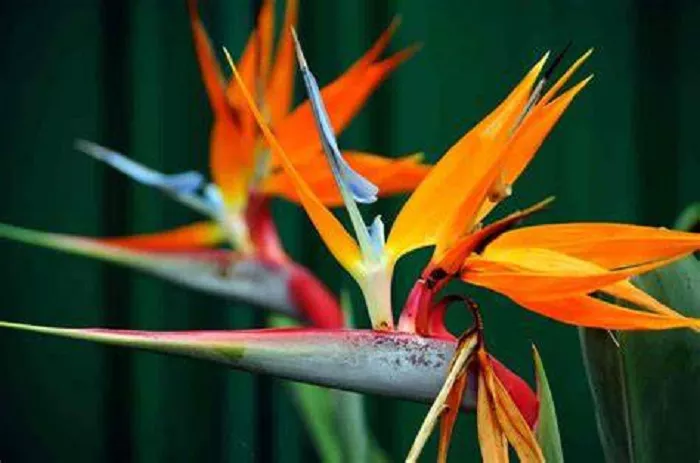The Bird of Paradise, with its striking resemblance to an exotic bird, is a true gem in any garden. Its vibrant orange and blue blooms are a symbol of paradise on earth. However, many gardeners find themselves puzzled when their Bird of Paradise fails to flower. This article will guide you through the essential steps and conditions needed to encourage your Bird of Paradise to reach its full blooming potential. Whether you are a seasoned gardener or a novice, these tips will help you bring life and color to your garden.
Understanding the Bird of Paradise
A Brief Overview
The Bird of Paradise (Strelitzia reginae) is a tropical plant native to South Africa. It thrives in warm climates and is known for its unique, colorful flowers that resemble a bird in flight. These plants can grow up to 5 feet tall and are often used as focal points in gardens. Understanding the natural habitat and growth patterns of the Bird of Paradise is crucial for successful flowering.
Key Characteristics
Bird of Paradise plants are evergreen perennials with large, banana-like leaves. They require ample sunlight, well-draining soil, and consistent moisture. The plant’s growth cycle includes a period of dormancy, followed by active growth and flowering. Typically, it takes about three to five years for a Bird of Paradise to mature and produce its first blooms.
Creating the Ideal Environment
Sunlight and Temperature
Bird of Paradise plants thrive in full sun to partial shade. They require at least six hours of direct sunlight per day to produce flowers. If you live in a region with intense afternoon sun, consider providing some shade during the hottest part of the day to prevent leaf scorch. The ideal temperature range for these plants is between 65°F and 80°F (18°C to 27°C). They can tolerate mild frost but will suffer in prolonged freezing conditions.
Soil and Watering
Well-draining soil is essential for the health of your Bird of Paradise. A mix of loamy soil with added perlite or sand can help ensure proper drainage. Overwatering can lead to root rot, so it’s important to allow the soil to dry out slightly between waterings. During the growing season, water the plant deeply once or twice a week, depending on the weather conditions. Reduce watering in the winter when the plant is dormant.
Nutritional Requirements
Fertilizing for Flowering
A well-balanced fertilizer can provide the necessary nutrients for your Bird of Paradise to flower. Use a slow-release fertilizer with a ratio of 10-10-10 (nitrogen, phosphorus, potassium) every three months during the growing season. Avoid over-fertilizing, as this can lead to excessive leaf growth at the expense of flowers. Organic compost can also be added to the soil to enrich it with micronutrients.
Soil pH and Nutrient Availability
The ideal soil pH for Bird of Paradise plants is between 6.0 and 7.0. This slightly acidic to neutral pH range ensures that nutrients are readily available to the plant. Regular soil testing can help you determine if any amendments are needed to adjust the pH. Adding lime can raise the pH, while sulfur can lower it.
Pruning and Maintenance
Pruning for Health and Flowering
Regular pruning can help maintain the health and appearance of your Bird of Paradise. Remove dead or damaged leaves to prevent disease and improve air circulation. Pruning can also encourage new growth and flowering. Be careful not to over-prune, as this can stress the plant and delay flowering.
Pest and Disease Control
Bird of Paradise plants are generally hardy but can be susceptible to pests such as aphids, mealybugs, and scale insects. Regularly inspect your plant for signs of infestation and treat with insecticidal soap or neem oil if necessary. Good air circulation and proper watering practices can help prevent fungal diseases.
Encouraging Flowering
Maturity and Patience
One of the most common reasons for a Bird of Paradise not flowering is immaturity. These plants typically take three to five years to mature and produce blooms. During this time, focus on providing optimal growing conditions to support healthy growth. Patience is key when waiting for your Bird of Paradise to flower.
Seasonal Care and Flowering Triggers
The Bird of Paradise has a natural flowering cycle that is influenced by seasonal changes. In the spring, the plant begins its active growth phase, and flower buds start to form. Providing consistent care throughout the year, with a focus on proper watering, fertilizing, and sunlight, can help trigger flowering. Avoid major changes to the plant’s environment, as this can disrupt its natural cycle.
Common Challenges and Solutions
Environmental Stress
Bird of Paradise plants can be sensitive to changes in their environment. Sudden shifts in temperature, light, or watering can cause stress and delay flowering. To minimize stress, acclimate your plant gradually to any changes in its environment. For example, if you are moving it outdoors for the summer, introduce it to direct sunlight slowly over a period of a few weeks.
Overcrowding and Root Binding
Overcrowding can inhibit the growth and flowering of your Bird of Paradise. If your plant is growing in a container, it may become root-bound over time. Repotting to a larger container with fresh soil can provide the plant with more space to grow and encourage flowering. When repotting, be careful not to damage the roots.
Conclusion
Encouraging your Bird of Paradise to flower requires a combination of patience, proper care, and understanding of the plant’s needs. By providing the right environment, nutrients, and maintenance, you can help your Bird of Paradise reach its full blooming potential. Whether it’s adjusting the sunlight, improving the soil, or simply giving the plant time to mature, these steps will bring you closer to enjoying the vibrant, exotic blooms that make the Bird of Paradise such a beloved addition to any garden.


